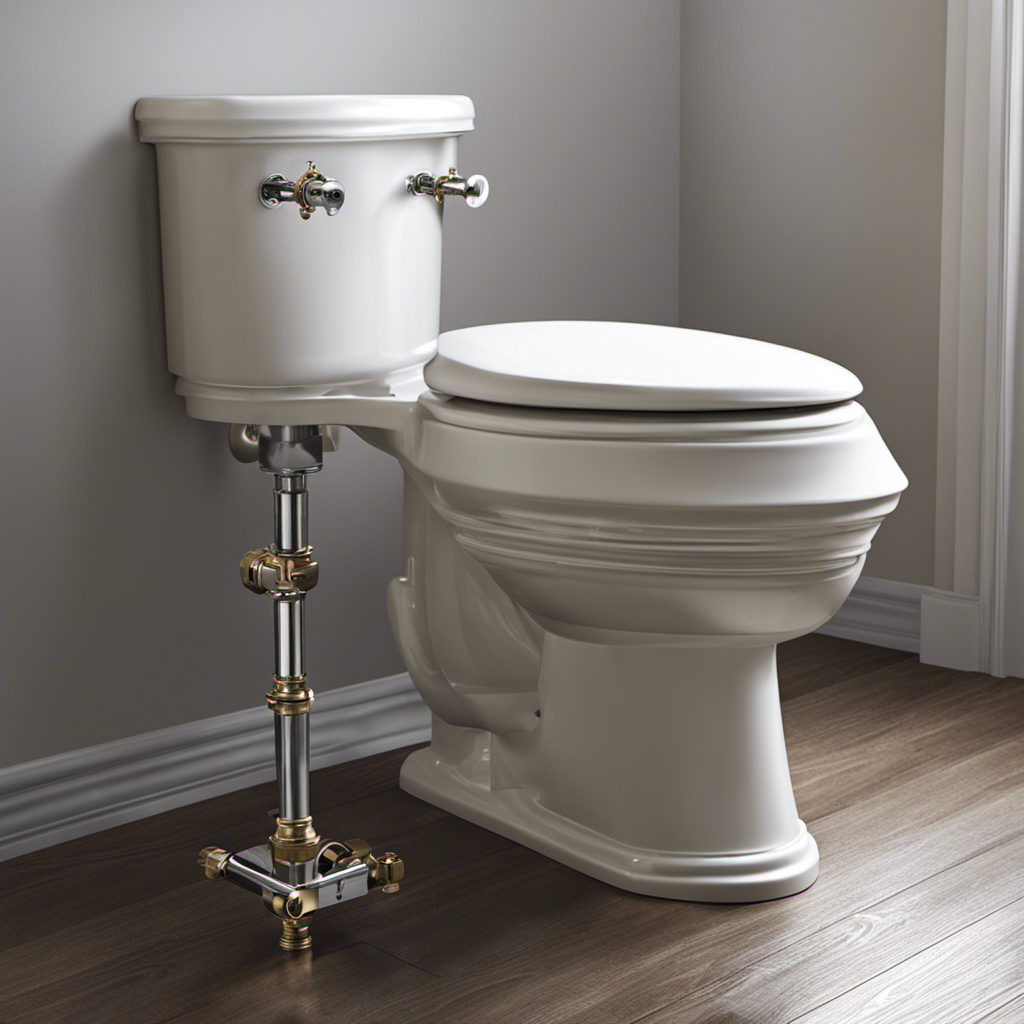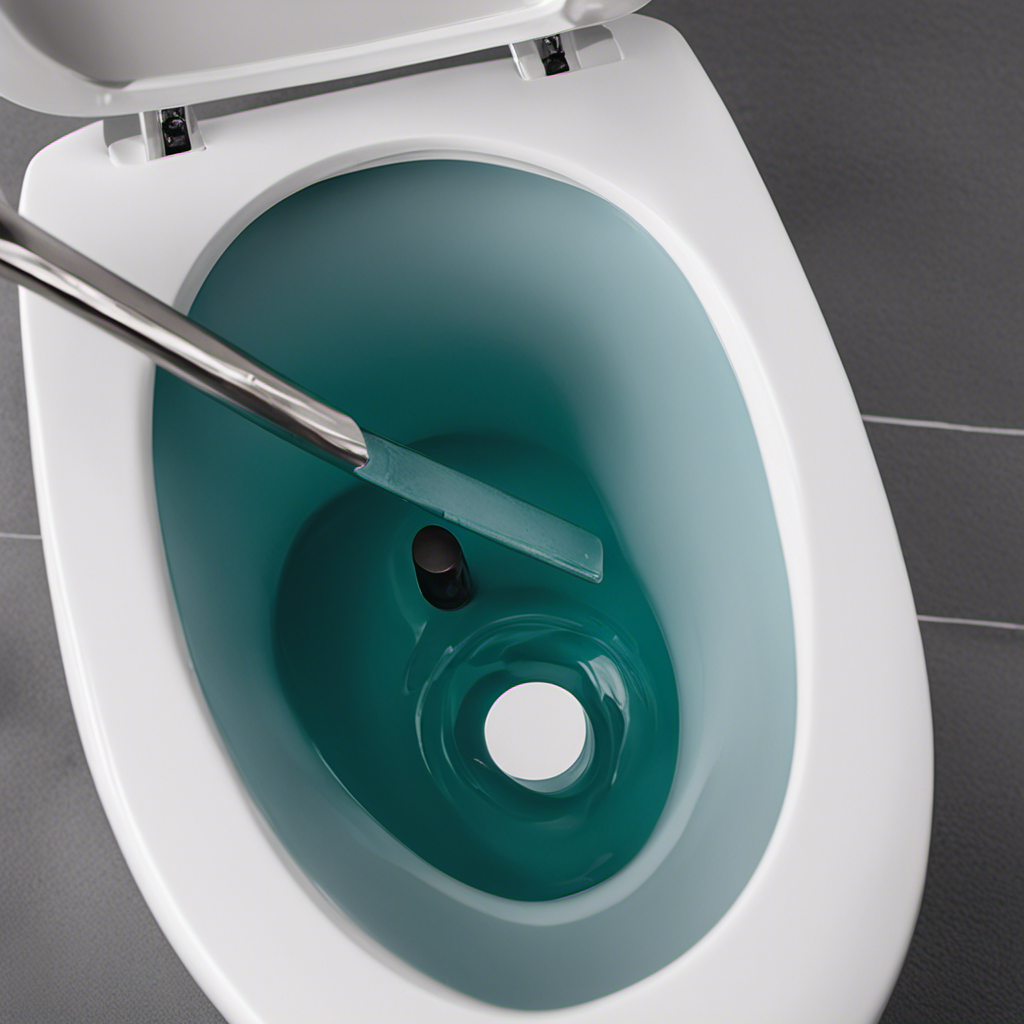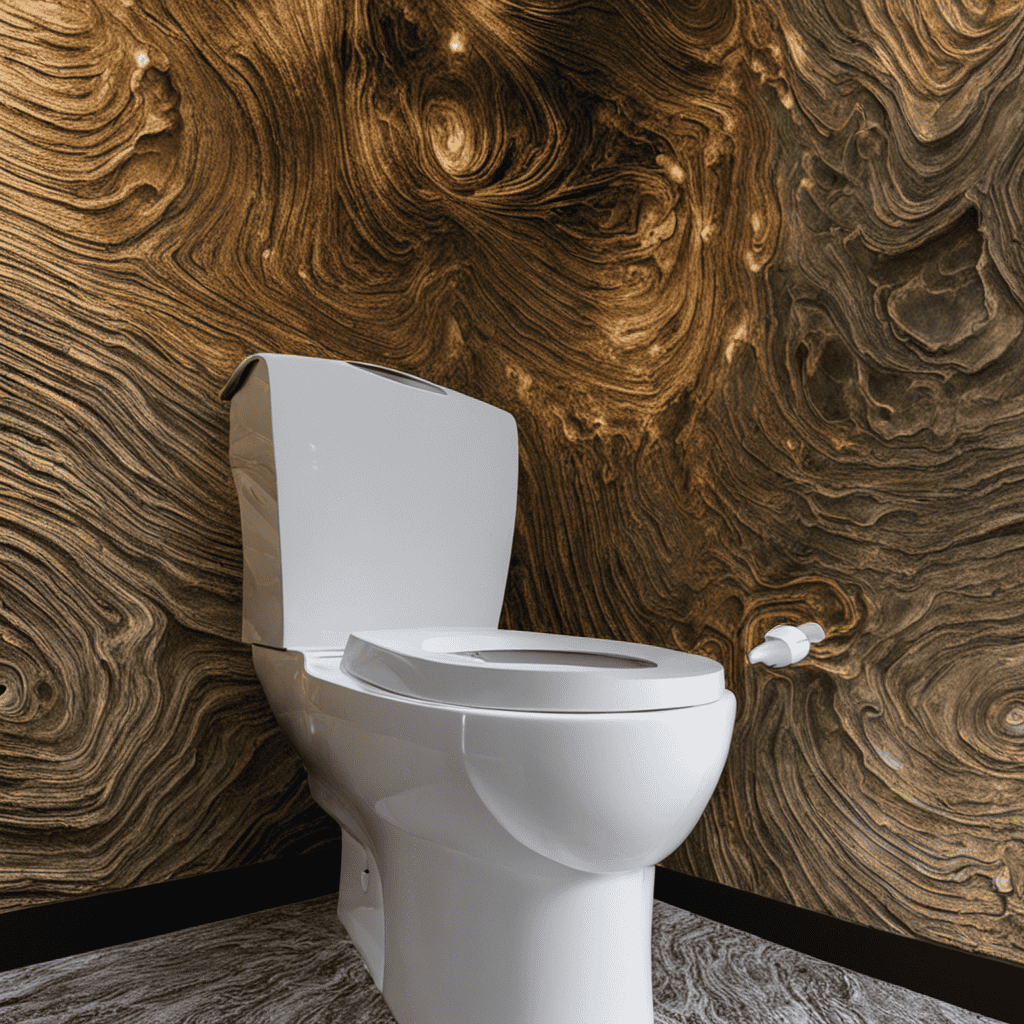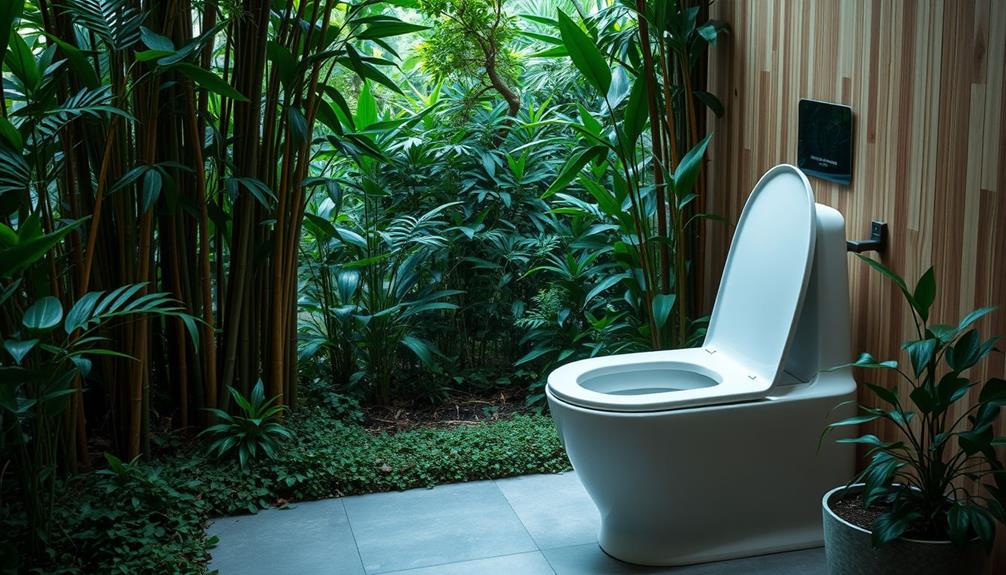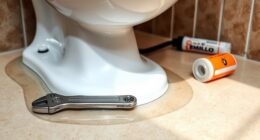Did you know that a leaking or overflowing toilet can waste up to 200 gallons of water per day? That’s enough to fill a bathtub!
In this article, I’ll show you how to shut off the water to your toilet, whether it’s for a repair or in an emergency situation.
By following these simple steps, you’ll be able to prevent any further water damage and save yourself from costly repairs.
So let’s get started and learn how to take control of your toilet’s water supply.
Key Takeaways
- The shut-off valve for the toilet is usually located behind the toilet and controls the water flow to the toilet.
- It is important to know the location of the shut-off valve for emergency shut-off procedures and troubleshooting.
- Tools needed for shutting off the water include pliers, a bucket, a towel, and a flashlight.
- If unable to locate or operate the shut-off valve, alternative ways to shut off the water include shutting off the main water supply to the entire house.
Locating the Shut-off Valve
The shut-off valve is usually located behind the toilet. When it comes to emergency shut off procedures or troubleshooting shut off valve issues, it is important to know where this valve is located.
The shut-off valve controls the water flow to the toilet and can be turned off to stop water from flowing into the tank and bowl. If you are experiencing a leak or need to perform maintenance, shutting off the water using the shut-off valve is the first step.
It is typically a small valve with a handle that can be turned clockwise to shut off the water. Now that you know where the shut-off valve is located, let’s move on to the next section where we will discuss the tools needed for shutting off the water.
Tools Needed for Shutting off the Water
You’ll need a pair of pliers to easily turn the valve and stop the flow. When it comes to toilet water maintenance and water supply control, having the right tools is crucial. The pliers will allow you to grip the valve firmly and turn it effectively, ensuring that the water is shut off completely. Here is a table showcasing the essential tools you’ll need for shutting off the water:
| Tool | Purpose |
|---|---|
| Pliers | To turn the valve |
| Bucket | To catch any water leakage |
| Towel | To wipe up any spills |
| Flashlight | To illuminate dark areas |
With these tools in hand, you’ll be well-prepared to tackle any toilet water maintenance tasks. Now, let’s move on to the next section and learn how to turn off the water supply altogether.
Turning off the Water Supply
When it comes to shutting off toilet water, it’s important to know how to find the shut-off valve and how to control the water in case of an emergency.
Finding the shut-off valve is crucial as it allows you to quickly stop the water flow to the toilet.
In case of an emergency, such as a leak or a burst pipe, knowing how to control the water can help prevent any further damage.
Shutting off Toilet Water
To shut off the water to the toilet, simply turn the valve counterclockwise. This is the most effective method to stop the flow of water and prevent any potential leaks or damages. By turning the valve, you can control the toilet water pressure and avoid any unwanted issues.
However, if you are unable to locate or operate the shut-off valve, there are alternative ways to stop the water supply. One option is to shut off the main water supply to your entire house, which will effectively cut off the water to the toilet as well.
Another alternative is to use the toilet’s water shut-off valve, which is usually located on the wall behind the toilet. This valve can be turned clockwise to stop the water flow.
Now that we have discussed shutting off the toilet water, let’s move on to finding the shut-off valve.
Finding the Shut-Off Valve
Now that you’ve learned about shutting off the toilet water, let’s focus on locating the shut-off valve.
Finding the shut-off valve is essential for controlling the water supply to your toilet. Typically, the shut-off valve is located on the wall behind the toilet or near the floor. It may be a round handle or a lever. If you’re having trouble finding it, check the area near the water supply line that connects to the toilet tank. Sometimes the shut-off valve can be hidden behind a panel or in a small access hole. If you still can’t locate it, consult your plumbing manual or contact a professional for assistance.
Understanding how to find and troubleshoot shut-off valves is crucial for efficient water control in emergencies or during repairs.
Transitioning into the subsequent section about ’emergency water control’, it’s important to know how to handle unexpected water leaks and burst pipes.
Emergency Water Control
If you’re faced with a sudden water leak or burst pipe, knowing how to quickly control the situation is vital.
In case of an emergency water damage, it is important to be able to stop the water supply as soon as possible to prevent further damage.
The first step is to locate the main shut-off valve for your home’s water supply. This valve is typically located near the water meter or where the main water line enters your house.
Once you find it, turn the valve clockwise to shut off the water supply. This will stop the flow of water and minimize the potential for water damage.
Now that you have successfully controlled the emergency water situation, it’s important to check for additional shut-off valves in your home to ensure complete control over your water supply.
Checking for Additional Shut-off Valves
When it comes to checking for additional shut-off valves, there are two key points to consider: hidden shut-off valves and shut-off valve alternatives.
Hidden shut-off valves are often overlooked and can be a challenge to locate, but they are crucial in emergency situations.
On the other hand, shut-off valve alternatives can be used when traditional shut-off valves are not accessible or not present.
Understanding these options is essential for effectively shutting off the water supply.
Hidden Shut-Off Valves
To locate the hidden shut-off valves, you can start by looking behind the toilet. Many people are unaware that there are additional shut-off valves that can be used to stop the water supply to the toilet. These hidden valves are often located in different areas of the bathroom, depending on the plumbing system. To help you troubleshoot and find these hidden valve locations, I have created a table below:
| Location | Description |
|---|---|
| Behind the toilet | This is the most common location for the shut-off valve. It is usually located on the wall, near the floor, behind the toilet. |
| In the wall | In some cases, the shut-off valve may be located inside the wall. You may need to remove a panel or access hatch to find it. |
| Under the sink | If your bathroom has a sink, check under it for a shut-off valve. It may be connected to the toilet’s water supply line. |
| Near the water heater | If your bathroom is close to the water heater, there may be a shut-off valve located nearby. Check around the heater for a valve. |
| In the basement or crawl space | If you have a basement or crawl space, the shut-off valve may be located there. Look for a valve near the water supply line. |
Shut-Off Valve Alternatives?
Now that we’ve discussed hidden shut-off valves, let’s explore some alternative water control methods.
While shut-off valves are the traditional way to cut off water supply to a toilet, there are other options available.
One alternative is to install a shut-off valve on the water supply line leading to the toilet. This allows you to isolate the toilet without shutting off water to the entire house.
Another option is to use a water control device, such as a water flow restrictor or a water shut-off timer, which can help regulate water usage and prevent potential leaks.
However, it’s important to note that these alternatives do not replace the need for shut-off valve maintenance. Regularly inspecting and maintaining shut-off valves is crucial to ensure their proper functioning in emergency situations.
Shutting off the Water in Emergency Situations
In emergency situations, you can quickly shut off the water to the toilet by turning the valve clockwise. This is important in cases of emergency water leaks or when you need to shut off the water for repairs.
Here are some steps to follow:
- Locate the shut-off valve: It is usually located behind the toilet, near the floor. Look for a small lever or wheel.
- Turn off the water: Using your hand, turn the valve clockwise until it is fully closed. This will stop the flow of water to the toilet.
By shutting off the water to the toilet in emergency situations, you can prevent further damage and minimize the risk of flooding.
Now let’s move on to some tips for maintaining the shut-off valve to ensure it works properly when you need it.
Tips for Maintaining the Shut-off Valve
Make sure you regularly check the shut-off valve behind the toilet to ensure it’s functioning properly. Maintaining the shut-off valve is essential for preventing water damage and ensuring the smooth operation of your toilet. Here are some tips for maintaining and troubleshooting the shut-off valve:
| Issue | Possible Cause | Solution |
|---|---|---|
| Valve won’t turn | Corroded or stuck valve | Apply penetrating oil and use pliers to turn the valve |
| Leaking valve | Loose or damaged seal | Tighten or replace the seal and ensure proper alignment |
| Water flow issues | Partially closed valve | Open the valve fully to allow proper water flow |
Reopening the Water Supply to the Toilet
After checking the shut-off valve, you can proceed to turn the water supply back on to the toilet. Here are some steps to help you restart the water flow and troubleshoot any issues with the water supply:
- Ensure the shut-off valve is fully open by turning the handle counterclockwise.
- Listen for any unusual noises or leaks that may indicate a problem with the water supply.
If there is no water flowing to the toilet, check if the main water supply to the house is on.
- Inspect the water line connected to the toilet for any blockages or kinks that may be restricting the flow.
- If the water supply is still not working, it may be necessary to call a professional plumber to further troubleshoot the issue.
Remember to always exercise caution when working with water supply systems and consult a professional if you are unsure about any steps.
Frequently Asked Questions
How Do I Know if I Have a Shut-Off Valve for My Toilet?
To find the shut-off valve for my toilet, I can check behind the toilet or near the wall. If I don’t see one, I may need to troubleshoot the water supply line or consult a professional.
Can I Shut off the Water Supply to My Toilet Without Any Tools?
I can shut off the water supply to my toilet without any tools by using the shut off valve located near the base of the toilet. It’s a quick and easy way to stop water flow in case of emergency.
Are There Any Additional Shut-Off Valves Besides the Main Shut-Off Valve for the Toilet?
Yes, there are additional shut-off valves for toilets. It’s important to know their location and how to properly maintain them. Regular maintenance ensures smooth operation and allows for quick shut-off in case of emergencies.
What Should I Do if There Is a Water Leak in the Toilet and I Can’t Find the Shut-Off Valve?
If there’s a water leak in the toilet and I can’t find the shut-off valve, I can try alternative methods to stop the leak. These methods may include tightening connections, replacing faulty parts, or using a temporary shut-off valve. To prevent water leaks, regular maintenance is essential.
Is It Necessary to Regularly Maintain the Shut-Off Valve for the Toilet?
Regular maintenance of the shut-off valve for the toilet is crucial. Neglecting it can lead to leaks and water damage. It’s important to regularly check and maintain the valve to prevent any potential issues.
Conclusion
So there you have it, folks. Congratulations on successfully learning how to shut off the water to your toilet! Now you can add ‘plumbing expert’ to your resume.
But let’s not forget the importance of this skill, because you never know when a toilet emergency might strike. Remember, turning off the water supply is not just a mundane task, it’s a heroic act that saves the day.
So go forth, my fellow water warriors, and may your toilets always be under your control. Happy flushing!
